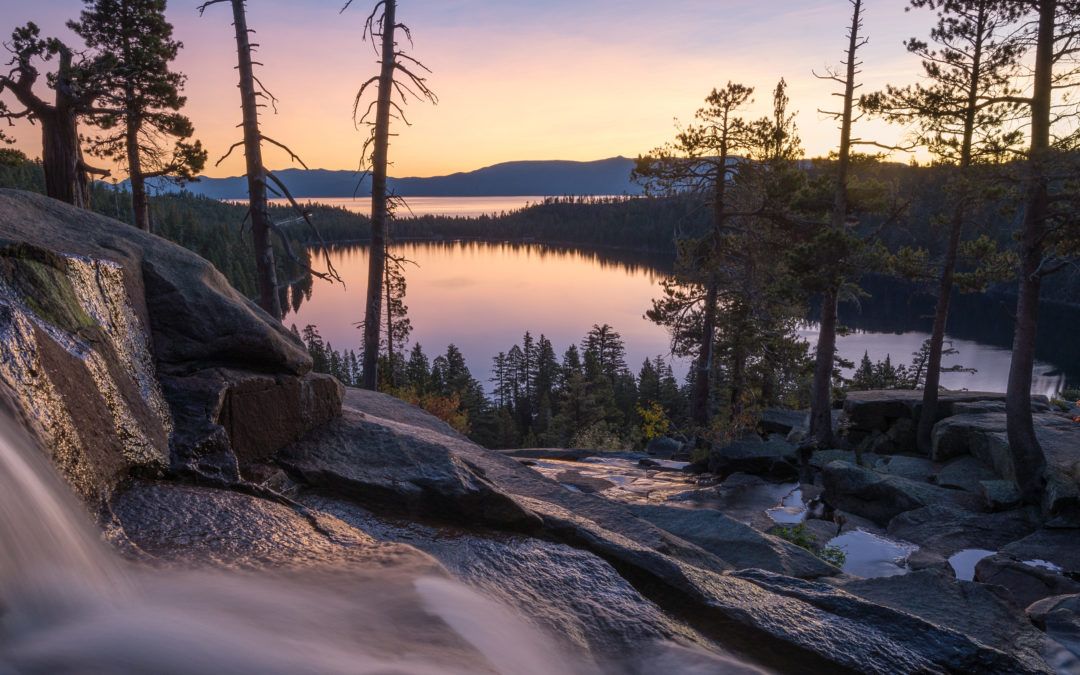By Julie Regan
In this season of giving thanks, we need only take in the incredible lake and mountains around us to see what we have to appreciate. Surrounded as we are by one of the most breathtaking places on Earth, it’s important to take time to appreciate it. In our day-to-day, the lake seems to face insurmountable threats while our communities work to overcome multiple challenges. Yet from a clear vantage, Lake Tahoe inspires every one of us to take part in its protection and to stay focused on the challenges of our time.
The big picture is especially important right now as we emerge from the pandemic and face an unprecedented housing crisis. Community concerns about traffic, fire evacuation, and demands on recreational visitation propelled our research and analysis staff at the Tahoe Regional Planning Agency (TRPA) to dig into data from the most recent U.S. Census survey, traffic and roadways, and climate change research to ensure our projects and plans are backed by the best available science.
The reports paint a picture of a region in transition. Lake Tahoe’s permanent population has only increased by about 200 people since the last census in 2010 but has dropped by 7,000 overall since the year 2000. The sudden decline of gaming as Tahoe’s major draw in the early 2000s also brought the loss of about 8,000 jobs, which has led to school closures, given way to a rise in second homeownership, and eroded support for local businesses.
Housing Affordability
In that time, Lake Tahoe also changed from an area with diverse housing options and growing families, to communities that are 40 to 80 percent second homes with a full-time population that the census shows is now mostly over the age of 55. As property values have soared, smaller workforce housing and multi-family projects are being priced out, along with the people who should both live and work in the basin.
A problem this complex requires many people working on many solutions. For its part, TRPA is supporting affordable and workforce housing projects and is currently seeking input on a targeted set of policy changes to make it more cost effective to redevelop properties into apartment buildings, duplexes, and triplexes for local workers, and to encourage infill development in walkable areas.
These targeted amendments would only apply to affordable and achievable deed-restricted housing and would allow one extra floor of height in town centers around the basin, and flexibility with other development standards that affect housing affordability. Importantly, all existing caps on development in Tahoe will remain in place and these homes must meet the same strict water quality protections as other construction projects. Hearings on the proposed amendments are scheduled for the next two TRPA Governing Board meetings in November and December and we would like to hear from you. All the information is at trpa.gov/housing.
In considering these changes, we cannot lose sight of what is happening to local workers, families, seasonal employees, and local businesses. Maintaining the status quo in workforce housing options is not acceptable in a region where assessed property values have hit $30 billion. TRPA and our housing partners in the basin must continue innovating to support vibrant, sustainable communities.
Sustainable Tourism and Transportation
Even though we all sit in traffic on peak days at Tahoe, comprehensive data are showing the number of vehicles per day entering and leaving the basin is nearly the same as it was between 1997 and 2005, and travel times around the basin in 2022 were far below their peak in 2017. What is changing is where people are going and what they are doing.
As Lake Tahoe’s gaming-backed visitation economy has declined, an outdoor recreation-based economy has risen. Rather than full parking lots at resort hotels, nearly the same number of vehicles from the early 2000s are at trailheads, beaches, and lining roadsides. More visitors are coming up for the day, often to escape climate-driven heat waves in surrounding areas. These new patterns are making Tahoe feel more crowded in certain locations where locals used to have more secluded access.
Lake Tahoe’s transportation and recreation infrastructure simply wasn’t ready for this shift. In response, TRPA and our destination stewardship partners have been advancing holistic corridor management plans along Tahoe’s busiest roadways. These plans replace roadside parking with mobility hubs and transit, extend and connect trails, improve safety, and add technology to communicate with drivers and reduce peak demand. Progress in the Nevada State Route 28 corridor on the East Shore is promising, but more work is needed in all corridors around the lake, and we must stay laser focused on delivering transportation improvements to Tahoe.
Above all, let’s keep working together to take care of Tahoe, appreciate what we have, and be respectful in our discourse. On this Veterans Day, I am profoundly grateful for those who have served our nation as wars are being waged around the globe. I hope you will join me in thanking America’s veterans for the sacrifices they’ve made to protect our nation, no matter the cost.
Julie Regan is Executive Director of the Tahoe Regional Planning Agency.

